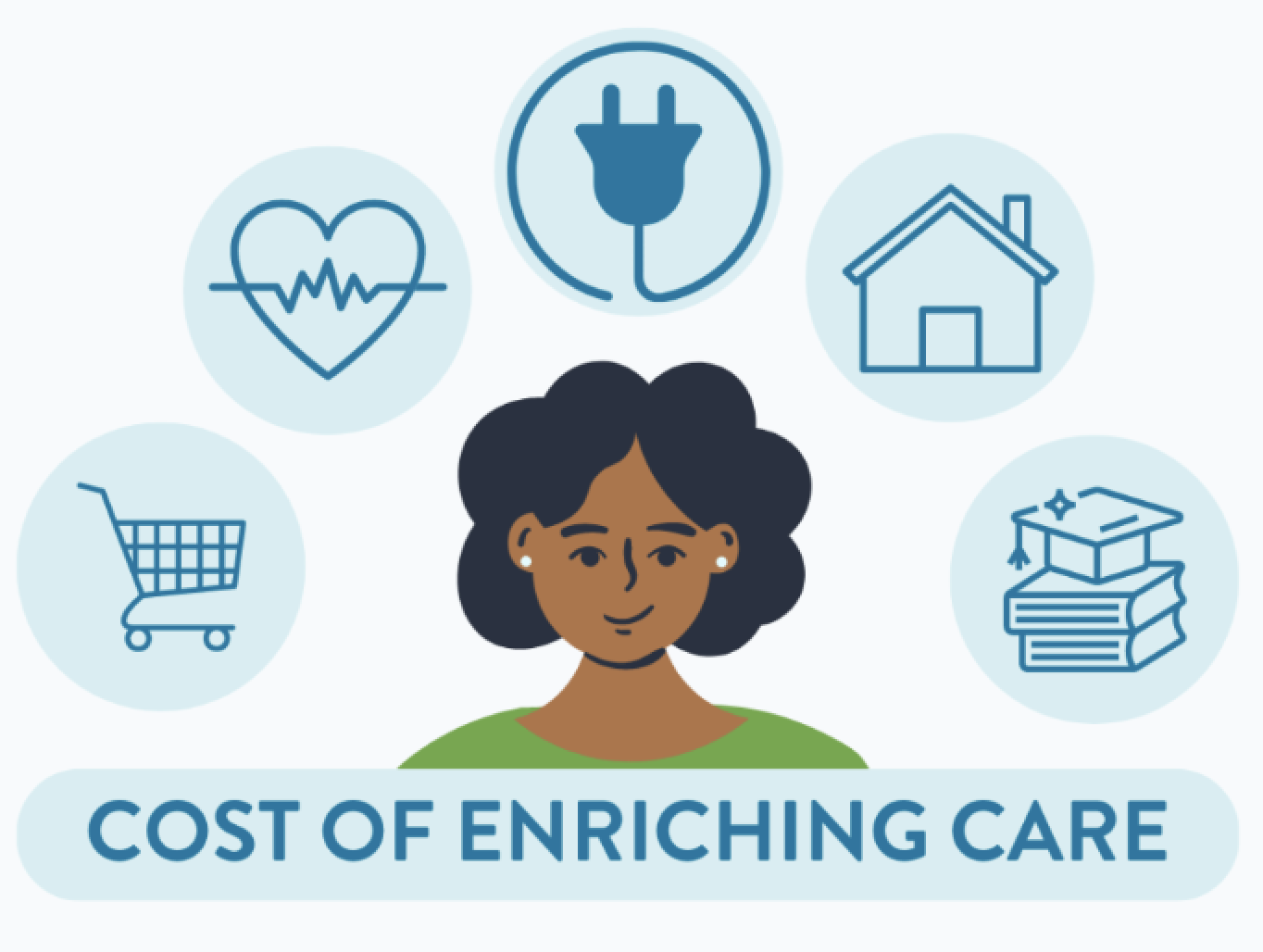
Child care providers are dedicated professionals who should be paid fairly and supported for their knowledge, experience, and talent.
The Challenge
California pays providers for delivering publicly funded child care services to families, but policymakers have underpaid them for too long. Most of the state’s child care providers are Black, Latine, or immigrant women who honor our vibrant communities by nurturing children’s home languages and cultures.
By not paying child care providers a fair, just wage, California lawmakers uphold a racist policy rooted in the legacy of enslaved Black women who cared for white children without pay.
The Solution
California is taking steps to pay child care providers based on the full cost of care.
An anti-racist policy that pays child care providers fairly means the state pays providers enough to cover 100% of their full costs for operating a sustainable child care business and take home a living wage, resulting in stability and growth for themselves and the children in their care.
Read More
The state’s current payments to child care providers are based on regional surveys asking providers how much they charge families. But child care providers set their fees based on how much families can afford to pay, not on the full cost of providing enriching care to our children. On top of this, the state only pays providers a percentage of how much they charge families, unfairly lowering their wages even more.
In 2023, the state and Child Care Providers United, the state union that represents publicly funded family child care and family, friend, and neighbor providers, agreed on a new way to pay providers, called an “alternative methodology.” This way is fairer because it is based on providers’ full costs, like their time, materials, rent/mortgage, etc. – all the costs associated with running an enriching child care program for California’s diverse children.
In March 2024, Child Care Providers United, the California Department of Social Services, and the California Department of Education released an approved list and description of the types of costs that go into providing enriching care. This list is just the starting point for discussions on fair pay for child care providers.
In 2025, state policymakers will decide on the full cost of providing enriching care in California and a new payment for child care providers based on the full cost. These decisions will happen in collective bargaining negotiations between Child Care Providers United and the state, and through the budget process with the Legislature for non-union center-based providers.
When providers will start getting their new pay is also a decision that has to be made.

Helpful Resources:
- California Department of Social Services Implementation Report to the Legislature (January 7, 2025)
- Joint Legislative Budget Committee Letter re: Comments on January Implementation Report (February 6, 2025)
- Assembly Budget Subcommittee Joint Hearing Agenda (February 19, 2025)
- California Department of Social Services Response to Joint Legislative Budget Comittee Comments (March 21, 2025)
- Senate Budget Subcommittee #3 Agenda (April 3, 2025)
- California Department of Social Services Rate and Quality Webpage
- California Child Care Development Fund State Plan Webpage
- Child Care Providers United Fair Pay Webpage
- California 2025-2026 State Budget Webpage
- California Department of Social Services Quarterly Update to the January Report (April 7, 2025)
In the News & Reports:
- Cal Budget & Policy Center
- Center for the Study of Child Care Employment
Hearings and Public Meetings in 2025
Stay informed by signing up for email updates, or follow us on: X – Instagram – Facebook or LinkedIn
Paying child care providers a fair wage makes all our communities stronger.





